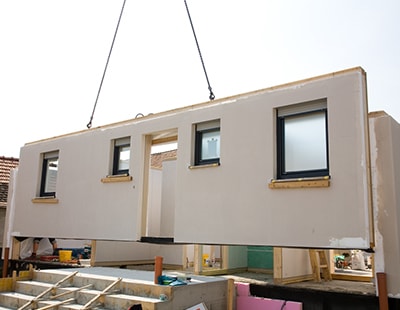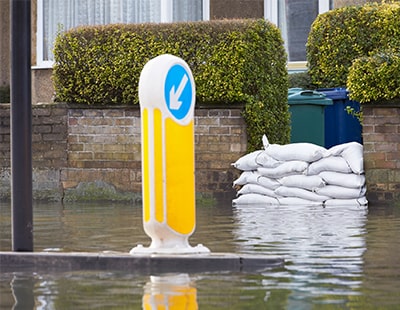With climate change and environmental degradation becoming a daily feature in news cycles, it’s no wonder why many are becoming increasingly conscious about their environmental footprint. We can clearly see this in the property market as people are taking stock of what is important to them when buying a home, with sustainability emerging as a significant influence in decision making – something investors must consider carefully when regarding construction projects.
Last year’s COP 26 summit asserted the targets governments, businesses and individuals alike will need to commit to and oversee if we are to avoid the worst effects of climate change. Such is the built industry’s part to play in this, that an entire day was dedicated to the built environment aimed at increasing action in places we live and work.
This is unsurprising as construction as an industry is the biggest offender when considering energy consumption and emissions, and environmental damage. According to research conducted by Bimhow, the construction sector contributes to 23% of air pollution, 50% of climatic change, 40% of water pollution, and 50% of landfill wastes. Indeed, the industry is responsible for 36% of global energy use, and within the UK alone it is accountable for 47% of carbon dioxide emissions.
UK consumers are becoming increasingly aware of these sorts of statistics and the effect their property choices have on the environment. With that in mind, what’s stopping a complete overhaul of the construction industry towards sustainability?
What’s slowing down progress in greener construction?
For the industry to propel itself into a sustainable future, the barriers slowing down the rate of progress must be addressed.
Conducting greener projects requires a workforce that possesses skills in sustainable working practices. However, an evident lack of experience in newly developed sustainable working practices is an issue. While there have been improvements, with the Global Green Skills Report 2022 finding that green talent in the workforce across sectors has increased by 38.5% since 2015, the demand still far exceeds the urgency for environmentally friendly homes. This causes delays in the adoption of sustainable projects as the industry tries to catch up by upskilling workers.
Accordingly, it is vital that workers are upskilled and reskilled. Training courses must be reconsidered with an emphasis on building factors such as energy efficiency, heat pump and EV installation, and smart features installation. Importantly, the industry needs to invest in training in how to construct and retrofit buildings to new regulatory standards.
Meanwhile, resistance at management level due to cost and time constraints can also cause issues. A common sustainable goal amongst all areas of construction, for both developers and suppliers, is essential, and without that, it can be challenging to sustain relationships that are key for mutually beneficial processes and friendlier costing rates.
Costing concerns also manifest over the upfront costs of going green through implementing intricate sustainable practices and adopting sustainable materials. Figures show that about 40% of UK businesses said cost was the biggest issue in implementing sustainable practices.
Deficits in green skills, a lack of management commitment, and financial concerns. All complex barriers have seen improvement in recent years but not at a pace sufficient enough to keep up with growing sustainable demands. For the industry to really step up, the incentives must be made clear.
Greener priorities
A complete switch to sustainable net-zero building will take its time with a greater commitment to environmental principles needed across all sectors of construction, but for investors, the incentives are clear as day.
As mentioned, homebuyer priorities are evolving towards more eco-friendly property options with energy efficiency requirements becoming essential. In fact, a recent research survey commissioned by FJP Investment revealed three quarters (74%) of potential buyers are attracted towards the greater energy efficiency that new-build properties afford – an issue which is becoming of heightened importance by the day, as energy price hikes place a larger financial burden on consumers.
Naturally, lower energy consumption will mean consumers have more manageable running costs and have the opportunity to tick off their personal low emissions targets. However, an equally significant gain will be the likelihood of sustainable housing becoming the norm. Keeping up with sustainable trends is not only important for economic competitiveness and responsibility, but also falls in line with construction policy with relative ease and cost.
For example, in last month’s Spring Statement, Chancellor Rishi Sunak announced that VAT on home insulation, solar panels and heat pumps will be reduced from 5% to zero for the next five years. The policy will make it cheaper for homeowners in England, Wales and Scotland to make properties more energy efficient which will, in turn, drive down energy bills and help support retrofitting work for the construction sector.
Environmental protection regulations and the increased consumer demand for greener homes are only going to expand as the urgent need to extinguish the climate crisis rises. Certainly, construction has seen much improvement in sustainable practices as investors start to understand the benefits of environmentally friendly projects.
That said, it is vital that barriers slowing down progress are removed in the form of upskilling green skills and establishing common goals across all sectors of the property market. This way, the industry can continue to provide homes to Britons in a way that is both competitive and environmentally sound.
*Jamie Johnson is the chief executive officer of FJP Investment, an introducer of UK and overseas property-based investments to a global audience of high net-worth and sophisticated investors, institutions as well as family offices.









.png)

.jpg)








Join the conversation
Be the first to comment (please use the comment box below)
Please login to comment